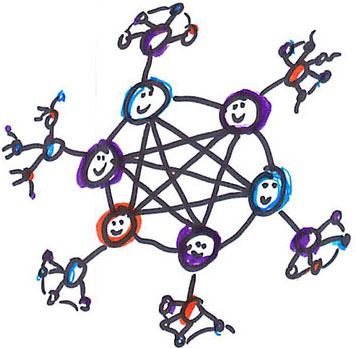Boosting Confidence: 9 Practices of Great Agile Teams
by Mary Gorman and Ellen Gottesdiener
We’ve noticed something about the high-performing agile teams we work with: their confidence. They truly believe and trust in their individual and collective abilities. Their confidence extends to how they go about managing their product and delivering value, continuously.
Inspired by Lisa Crispin’s blog, we have compiled our own list of confidence-boosting practices that we suggest when coaching agile teams. We hope they’ll help you and your team as you strive to discover and deliver great products.

Confidence Boosters
- Be objective. Confidence does not equate to competence. Honestly assess your skill level, regardless of which discipline your hail from, be it agile product management, agile business analysis, test, or development. To be consciously competent, you need to objectively value your skills and consider where you can improve.
- Be a participant/observer. As you actively engage in collaborative teamwork, including agile requirements discovery, planning, and demo and retrospective sessions, observe those around you—what they do and say, what your impact is on them and what their impact is on you. Adjust and adapt.
- Be definitive. Clarify who participates in decisions, as well as when and how. Make decisions, and decision rules, explicit and transparent.
- Be curious. Participate in online forums, read online journals and blogs (like this one!), form your own lean coffee or lunchtime sharing sessions; be familiar with industry trends.
- Be prepared. Grow a tool kit of reusable assets to help your agile requirements discovery work. Some examples: repurpose product discovery session agendas and activities that work, draw on them for future sessions; keep a “starter list” of value considerations; have scenarios for stories or features at the ready; use a template for structuring simple tests.
- Be a buddy. Share your experiences and learn from each other, both functional peers (BA with BA) and cross-functional peers (Test with BA, BA with UX) and with your agile product management (e.g., product manager, agile product owner, product champion, or business owner). For example, we often share practices we use when coaching agile teams with our colleagues. We especially enjoy exchanging requirements discovery and testing ideas with Lisa Crispin and Janet Gregory; product discovery practices with Jeff Patton; backlog refinement techniques with Jeff Sutherland.
- Be supportive learners. Share skill levels and learning goals; design ways to help each other to grow. Create your own “learning canvas” and share it with colleagues.
- Be experiential. Swap roles to learn and empathize. A developer can listen to and observe a user at work; a product person can observe user interviews; an analyst can run acceptance tests.
- Be co-creators. Get the team engaged in exploring personas, scenarios, examples, tests, and drawing analysis models. Diverse perspectives enrich the process and increase confidence in a shared understanding of the product.
It’s Contagious!
Confidence has a way of growing and spreading. We can attest to it because we’ve experienced it personally. For example, Mary found as she became more self-confident in her analysis and programming skills, she was able to mentor others, helping them to increase their confidence and proficiency. Similarly, when Ellen was first honing her facilitation skills, she made it a point to find mentors to help her—especially for complex situations such as requirements discovery sessions for large products with lots of interdependencies, teams with high levels of conflict, or rifts among product and engineering communities. As a result, she noticed that she was quickly able to help participants approach their collaborative work with greater ease and confidence.
That’s how confidence works: the more confidence you acquire, the more you are able to help others, which helps them grow more confident as well. Confidence is contagious—in the best possible way!
Just as people have self-confidence, high-performing teams have “team-confidence.” They embrace their interdependence. They are OK with the fact that they are mutually reliant on—and responsible to—each other. As each team member’s self-confidence grows, so does the team’s confidence level.
In true circular fashion, confident teams help increase each member’s self-confidence. It is certainly a case of “what goes around, comes around”!
How about you?
We’d love to hear your confidence-boosting tips. Please share by leaving a comment below.

Hey Ellen/Mary! Great stuff…I’d would also add:
Trust is a huge aspect of confidence I’ve seen in teams. They need to give each other the opportunity to develop and maintain a high degree of trust which breeds a ton of confidence at many levels.
Also, celebrating the successes as opposed to brushing past them to rush to the next item. Confident teams are generally born from stopping to acknowledge their successes and celebrating them together, creating a culture of self-confidence.
yes Bob, great points. Trust (and transparency) as well as frequent celebrations…indeed! thanks.
[…] sich um einen Gastbeitrag von Ellen Gottesdiener und Mary Gorman. Den Originalartikel können sie hier […]